In this article published in Descubrir el Arte, Sara Valverde traced the biography of Tina Modotti, photographer and political activist. Ilaria has translated it for you! ;) Here is the link to the original.
Like many other women who were part of the avant-garde of her era and left their works as testimony, Tina Modotti is being recognized seventy-three years after her death almost as a legend for her photographs that capture reality. On the seventy-third anniversary of her death (January 6), Descubrir el Arte paid tribute to the artist by recalling her works and her biography, which could very well be the plot of a novel.
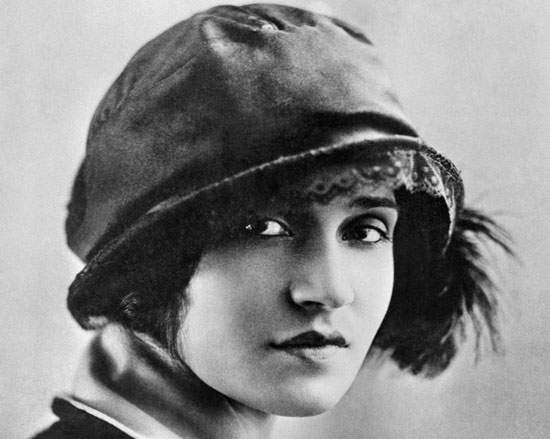 |
| Tina Modotti |
She was born in 1896, at the turn of the century. During her childhood in old Italy, she absorbed the protests and early revolts of the working class to which her family belonged. Her father, eager to change the quality of her life, decided to emigrate his family to America, where Tina grew up with her siblings. In the Italian neighborhood of San Francisco, where the Modottis settled, Tina began to frequent bohemian theater circles that later led her to Los Angeles, where she met and married her first husband, the Canadian poet and painter Roubaix de l’Abrie.
One privilege from which the artist could somewhat benefit was the independence and freedom to get to know and frequent the Los Angeles intellectual circle, whose members were assiduously invited to the couple’s home. It was at one of these meetings that Tina met the man who would later become her teacher and lover, Edward Weston, a famous North American photographer.
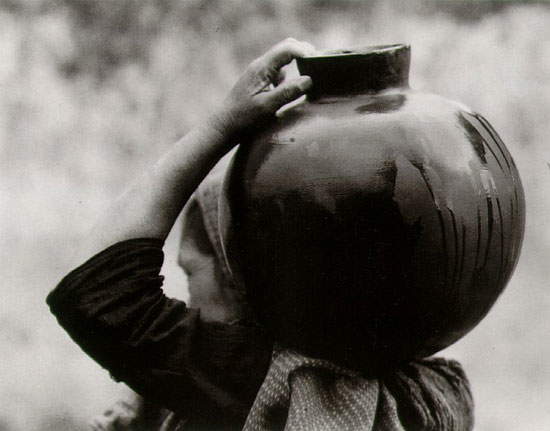 |
| Tina Modotti, Mujer con olla (Woman with pot, 1926) |
After l’Abrie’s death in Mexico, where Tina was to move, she suggested that Weston follow her to discover this country. They arrived there in 1922 and settled there. At that time in Mexico, the traces of the revolution (1910-1920) were still in a latent state and served as a creative source for the cultural movement that was developing around muralism. The idea of modernity, regarding the struggle for progress and for the betterment of the people, together with the native roots and Mexican idiosyncrasy, were introduced into the plastic arts. Soon, in the government of Álvaro Obregon (1920-1924) supported on the cultural level by Minister José Vasconcelos, Tina Modotti was included, especially with regard to the social causes that would lead the artists to be active participants both through their works and through their protests. In Modotti’s case, what made her participate in various campaigns, such as the suffragist campaign of 1929, was the defense of the women’s vote or the visibility of women in the artistic field.
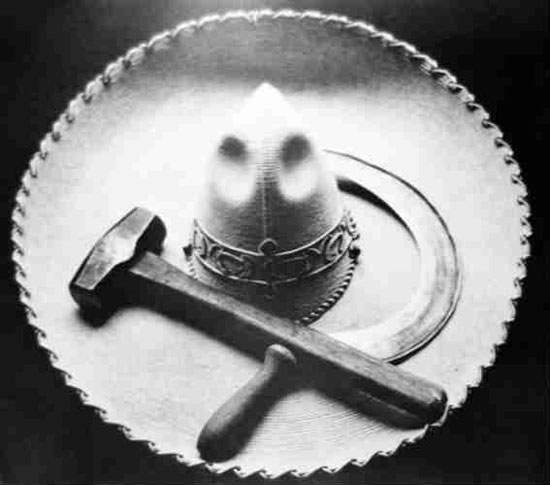 |
| Tina Modotti, Sombrero mejicano con hoz y martillo (Sombrero with sickle and hammer, 1927) |
On the other hand, these years in Mexico served as an apprenticeship for the young artist to learn the techniques of photography that her partner Edward Weston taught her: she often posed for his photographs and we have evidence of this in an extensive archive. Her companion’s influence can be seen by looking at Tina’s photographs made in the first five years of the 1920s, especially in capturing the textures of objects, playing with the geometric shapes of the objects to be composed, or in her interest in light; in almost all of her images from that time she tries to shape the outlines with light and shadow. Examples are the compositions with flowers or poles.
However, after Weston’s departure from Mexico in 1926, his photography became an expression of reality, of Mexican society and its ways of life. A propensity he felt as a necessity in order to comment through his works on modern Mexico. This idea would be valued by the newspaper El Machete, a dissemination tool of the Mexican Communist Party, for which she would begin to work, shortly after becoming an activist.
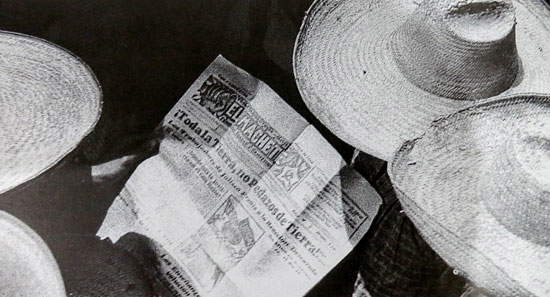 |
| Tina Modotti, Campesinos leyendo El Mac hete (Peasants reading El Machete, 1928) |
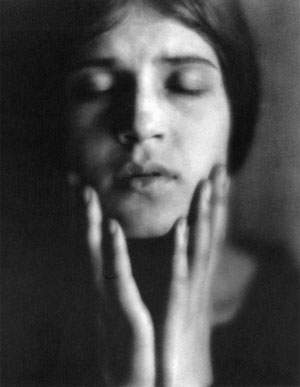 |
| Edward Weston, Photographic Portrait of Tina Modotti (1924) |
However, the 1930s would bring problems to Mexican communism because of disagreements with the government and its constant attacks on its members: this forced many militants and especially foreigners to embark to seek asylum in Europe. Among them was Tina Modotti, who arrived in Berlin in April 1930, where she would stay only a few months before going to the USSR. In the following years, under the Soviet gaze, she traveled around Europe engaged in her political and social activities. Spain was also among her destinations, at the height of the Civil War, where she worked in a hospital as a member of the International Brigade. Here she carried out her last jobs as a photographer until her death: she was responsible for illustrating Viento del Pueblo, the collection of poems by Miguel Hernández published in 1937 by the Fifth Regiment press.
In 1939 he returned to Mexico together with his companion of these last ten years,Vittorio Vidali, an agent of the GPU (Soviet secret police) and Stalin’s right-hand man. Upon her return to Mexico, she devoted herself exclusively to the party because it had transformed her, nullifying her creative potential to which she felt indifferent and distant and which she never recovered.
Warning: the translation into English of the original Italian article was created using automatic tools. We undertake to review all articles, but we do not guarantee the total absence of inaccuracies in the translation due to the program. You can find the original by clicking on the ITA button. If you find any mistake,please contact us.